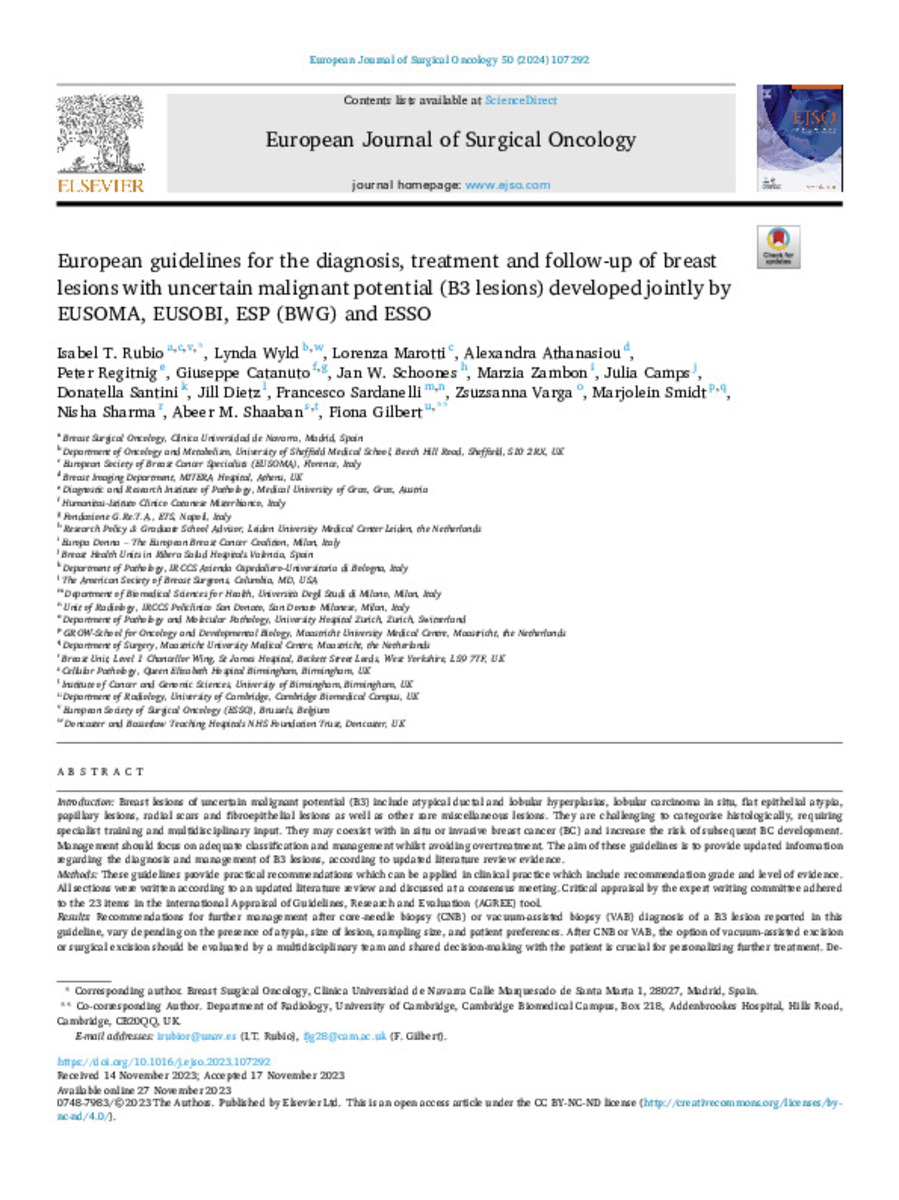European guidelines for the diagnosis, treatment and follow-up of breast lesions with uncertain malignant potential (B3 lesions) developed jointly by EUSOMA, EUSOBI, ESP (BWG) and ESSO
Keywords:
Atypical ductal
Lobular hyperplasias
Lobular carcinoma in situ
Flat epithelial atypia
Breast cancer
Core-needle biopsy
Note:
This is an open access article under the CC BY-NC-ND license
Citation:
Rubio, I.T. (Isabel T.); Wyld, L. (Lynda); Marotti, L. (Lorenza); et al. "European guidelines for the diagnosis, treatment and follow-up of breast lesions with uncertain malignant potential (B3 lesions) developed jointly by EUSOMA, EUSOBI, ESP (BWG) and ESSO". European Journal of Surgical Oncology. 50 (1), 2024, 107292
Statistics and impact
0 citas en

0 citas en

Items in Dadun are protected by copyright, with all rights reserved, unless otherwise indicated.







